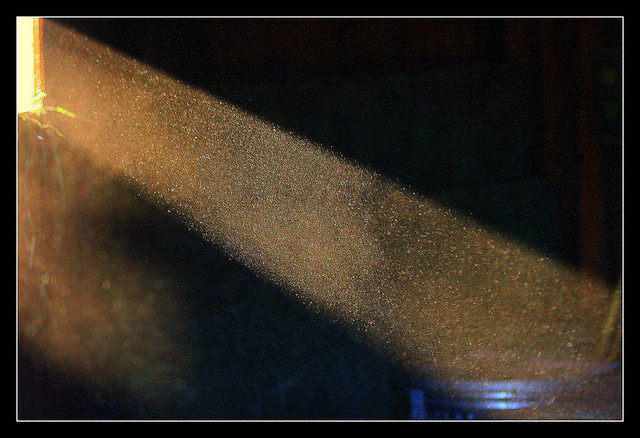FWP:
SETS
GAZE: {10,12}
SUN: {10,5}
ZARRAH: {15,12}
On the nature of the rauzan , 'crevice-work', see {64,4}; the word is also used in the next verse, {87,4}.
The idea that vision happens when the beholder's eye emits beams that fall on the object beheld, is called the 'emission theory'; it goes back to the Greeks, and finds believers even today (though it is scientifically incorrect). I thank David Lelyveld for pointing this out (Dec. 2020).
The possibilities of this verse hinge on the subtleties of negation in the second line. Since (by no coincidence, of course) we can't tell whether it lacks a subject and verb, as in (2a), or only a verb, as in (2b), both readings are possible:
(2a) Those things that are visible in the crevice-work of the walls of her house are not dust-motes. There may seem to be dust-motes dancing in the shafts of sunlight coming in through the crevice-work, but what they really are is fragments of the sun's gaze that have all gathered there.
(2b) There are no dust-motes in the crevice-work of the walls
of her house. No dust-motes are visible in the shafts of sunlight coming in through the crevice-work, because all those bits of earthly
dross have been burned away or otherwise displaced by the sun's concentrated
gaze, which will brook not even the smallest interference. Or: no dust-motes can be seen because those small glittering points of light have now come
together as a pure concentrated solar gaze.

Nazm:
That is, even the sun has an ardor for staring at her. (86)
== Nazm page 86